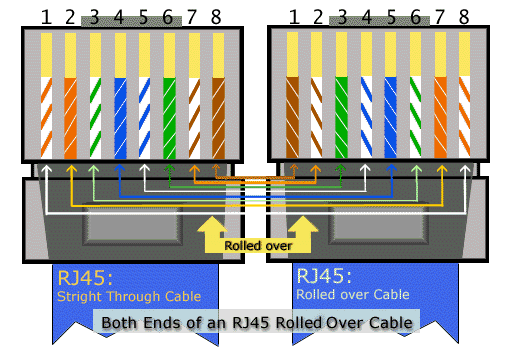Difference Between Fast Ethernet And Serial Interface
- Difference Between Serial Cable And Ethernet Cable
- Gigabit Ethernet
- Difference Between Fastethernet And Serial Interface
MII connector on a Creator workstationThe media-independent interface ( MII) was originally defined as a standard interface to connect a (i.e., 100 Mbit/s) (MAC) block to a. The MII is standardized by and connects different types of PHYs to MACs. Being media independent means that different types of PHY devices for connecting to different media (i.e., etc.) can be used without redesigning or replacing the MAC hardware. Thus any MAC may be used with any PHY, independent of the network signal transmission media.The MII can be used to connect a MAC to an external PHY using a pluggable connector, or directly to a PHY chip which is on the same.
On a PC the Type B carries MII bus interface signals.The (MDIO) serial bus is a subset of the MII that is used to transfer management information between MAC and PHY. At power up, using, the PHY usually adapts to whatever it is connected to unless settings are altered via the MDIO interface.The original MII transfers network data using 4-bit in each direction (4 transmit data bits, 4 receive data bits). The data is clocked at 25 MHz to achieve 100 Mbit/s throughput. The original MII design has been extended to support reduced signals and increased speeds. Current variants include, reduced media-independent interface ( RMII), gigabit media-independent interface ( GMII), reduced gigabit media-independent interface ( RGMII), serial gigabit media-independent interface ( SGMII), high serial gigabit media-independent interface ( HSGMII), quad serial gigabit media-independent interface ( QSGMII), and 10-gigabit media-independent interface ( XGMII).
Contents.Standard MII The standard MII features a small set of registers:. Basic Mode Configuration (#0).
Status Word (#1). PHY Identification (#2, #3). Ability Advertisement (#4). Link Partner Ability (#5). Auto Negotiation Expansion (#6)The MII Status Word is the most useful datum, since it may be used to detect whether an Ethernet NIC is connected to a network., Chapter 22.2.4. Retrieved 2018-11-19. Retrieved 20 April 2018.
IEEE 802.3,2000–22.2.4 Management Functions. (PDF). Archived from the original on 2016-03-03.

CS1 maint: BOT: original-url status unknown. (PDF). (PDF). Archived from the original on 2016-03-03. CS1 maint: BOT: original-url status unknown. (PDF).
Difference Between Serial Cable And Ethernet Cable
2006-06-01. (PDF). 1995-08-01.External links. (PDF), archived from (PDF) on 2015-07-14. Bravo games.
Not all Ethernet is created equal. These days there are two available standards, Fast Ethernet and Gigabit, which are completely distinct speed interfaces. It’s important to understand the difference between them and which one you should choose.So there I was shopping for a new Ethernet switch, assuming that all of them were using the latest and greatest technology. Boy was I wrong—I ended up with a “Fast Ethernet” switch when what I really needed was a “Gigabit Ethernet” switch.
Gigabit Ethernet

Turns out, there’s a huge difference. A Quick Ethernet History LessonEthernet was first introduced to the public in 1980, and it had a max throughput of 10 megabits per second. 15 years later in 1995, an updated version of Ethernet was released. It was called “Fast Ethernet”—sometimes referred to as “10/100”—and it had a throughput of 100 megabits per second.However, just three years after that, an even newer version was introduced. It was named “Gigabit Ethernet”—or “10/100/1000”— and it is currently the latest standard. Gigabit Ethernet has a maximum throughput of 1,000 megabits (or 1 gigabit) per second, hence the name.Faster interfaces do exist.
A 10 gigabits per second is currently in use, but it has yet to reach widespread use in consumer products. There’s even a 1,000 gigabits per second (Terabit Ethernet) interface currently in development. Fast Ethernet? More Like “Fast” EthernetMost modems and routers these days come with Gigabit Ethernet interfaces. So right off the bat, your home network is already equipped with the latest and greatest that networking speeds have to offer.
Difference Between Fastethernet And Serial Interface
The moment you throw a Fast Ethernet device into the mix, your maximum network speed instantly drops by 90%. A previous article of ours:“In order to take full advantage of the maximum speeds, all the devices in the transfer chain need to be at or above the speed rating you want. For example, let’s say you have a media server in your basement with a Gigabit Ethernet card installed and a media console in your living room with a Gigabit Ethernet card but you are connecting the two together with a 10/100 switch. Both devices will be limited by the 100 Mbit/s ceiling on the switch. In this situation, upgrading the switch would boost your network performance considerably.”RELATED:I got myself into this exact situation when shopping around for Ethernet switches. I went onto Amazon, searched for “ethernet switch,” and picked one near the top that had good reviews and was pretty cheap. Simply assuming it was what I wanted, I hit the purchase button.
But what I really bought was a slower Fast Ethernet switch instead of the Gigabit Ethernet switch I really needed.RELATED: Fast Ethernet Is Still Alive and Well for Some ReasonWhen you perform a, the top result (at least for me) is a Fast Ethernet switch (, to be exact).